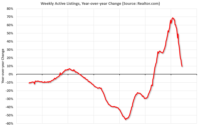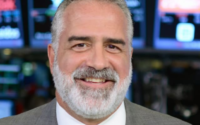Here’s why the Fed’s inflation fighting is doomed, per one veteran trader
Investors are warming to the fact the Federal Reserve is about to throw ice cold water on the hot U.S. economy where inflation is surging to four-decade highs. But whether the Fed hikes 50 basis points next week — or even a previously-unfathomable 75 points — Jerome Powell and company are unlikely to achieve the proverbial (and rare) soft landing, according to one veteran trader.
Bill Smead, chief investment officer at Smead Capital Management, compared the present bout of persistently high inflation to that of the 1970s. In both cases, the government was providing massive amounts of liquidity through spending, which the Fed facilitated with low rates.
The purpose of the spending is immaterial, Smead said when he recently joined a Yahoo Finance Plus webinar (video above).
“[I]t might be the Vietnam War and Johnson’s Great Society, or it might be the pandemic war and the quarantine shutdowns. We don’t care what it is,” he said. “Massive liquidity has been introduced into the system.”
A second similarity emerges from the demographics of the predominant household-forming generation. In the 1960s and 1970s, it was the baby boomers. Today, it’s their children, the millennials, who are buying houses and starting families.
“You’ve got a cocktail of inflation that is powerful. So you’ve got way too much money with way too many people who are going to do things out of necessity, rather than by choice,” he said.
Smead emphasized that spending on essential goods — as opposed to discretionary items — is what will make inflation a persistent force.
“We’re talking about necessities spending: rent, gasoline, cars, houses, children, etc. Necessity spending – too many people with too much money chasing too few goods,” he said.
If inflation does remain a fixture in the U.S. economy as Smead expects, there will be a multi-year period of adjustment during which investors adjust to the new norm.
“[Y]ou’ve got all the precursors all set in place [for] an extended period of time where inflation becomes the most important thing in the economy,” he said, “[then] everyone adjusts themselves to those facts over the following five to 10 years.”
—
Jared Blikre is a reporter focused on the markets on Yahoo Finance Live. Follow him @SPYJared.
Read the latest financial and business news from Yahoo Finance
Follow Yahoo Finance on Twitter, Instagram, YouTube, Facebook, Flipboard, and LinkedIn
[ad_2]
Source link


